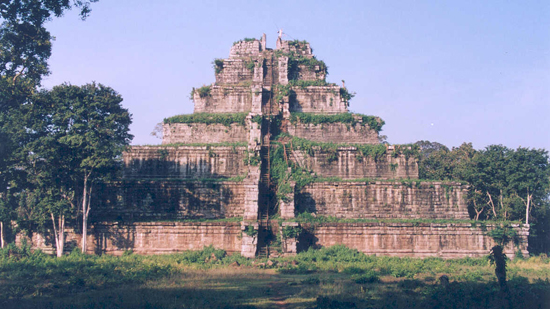
DAY 1: Siem Reap to Koh Ker
We travel to the lost temple of Beng Mealea, the titanic of temples, a slumbering giant lost for centuries in the forests of Cambodia. It is the most accessible of Angkorís lost temples, a mirror image of Angkor Wat, but utterly consumed by the voracious appetite of nature. Constructed by Suryavarman II (1113-1150), the builder of Angkor Wat, the forest has run riot here and it is hard to get a sense of the monumentís shape amid the daunting ruins.
Here it is possible to enjoy an Indiana Jones experience clambering about the vast ruin. For those who want a more gentle adventure, there is also a sturdy wooden walkway running right into the heart of the temple. It is also possible to visit a nearby Angkor-era quarry from where stone was cut to build these massive monuments.
We then head into the bush to the remote Angkor capital of Koh Ker. The history of Cambodia is riven with dynastic spats and political intrigue and one of the most memorable came in the 10th century when Jayavarman IV (928-942) fell out with his family, stormed off to the northwest and established the rival capital of Koh Ker. Although the capital for just 15 years, Jayavarman IV was determined to legitimise his rule through a prolific building programme that left a legacy of 30 major temples and some gargantuan sculpture that is on display in the National Museum in Phnom Penh.
We visit the vast Prasat Thom, a seven-storey step pyramid, more Mayan than Khmer, with commanding views over the surrounding forest. Nearby is Prasat Krahom or Red Temple, named after the pinkish Banteay Srei-style stone from which it is built.
There are many more temples in the area, including the five towers of Prasat Ling, each enclosing a giant linga or fertility symbol, the biggest and best found in situ anywhere in Cambodia. We then return to our camp for the night, spending the night in a smart safari tent in the forest near the walls of Prasat Thom.